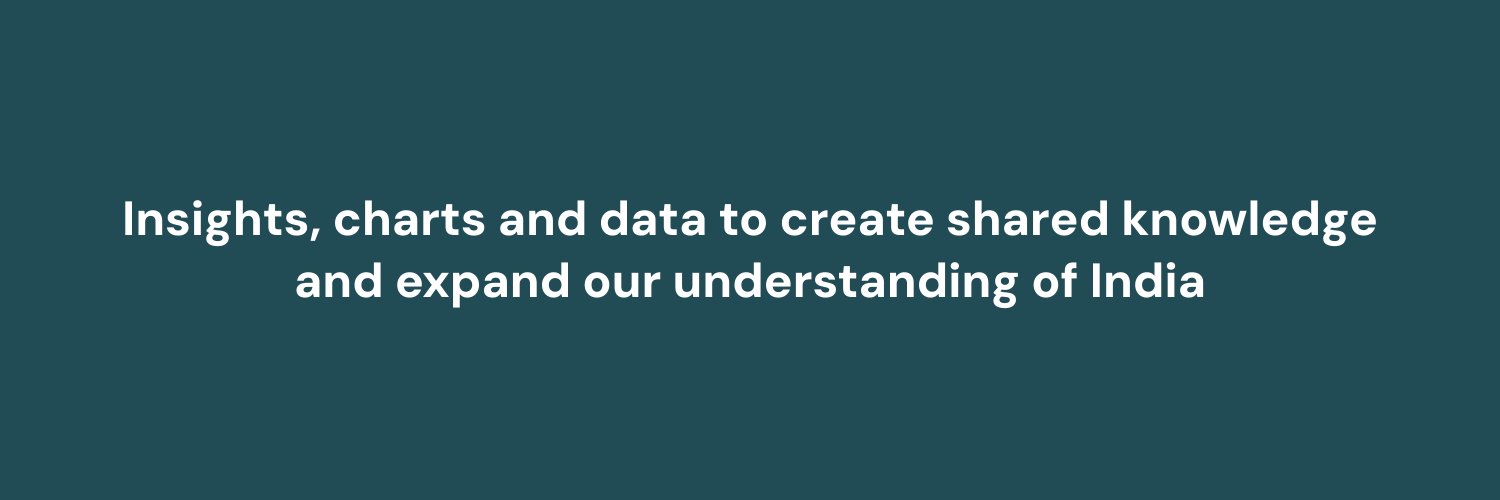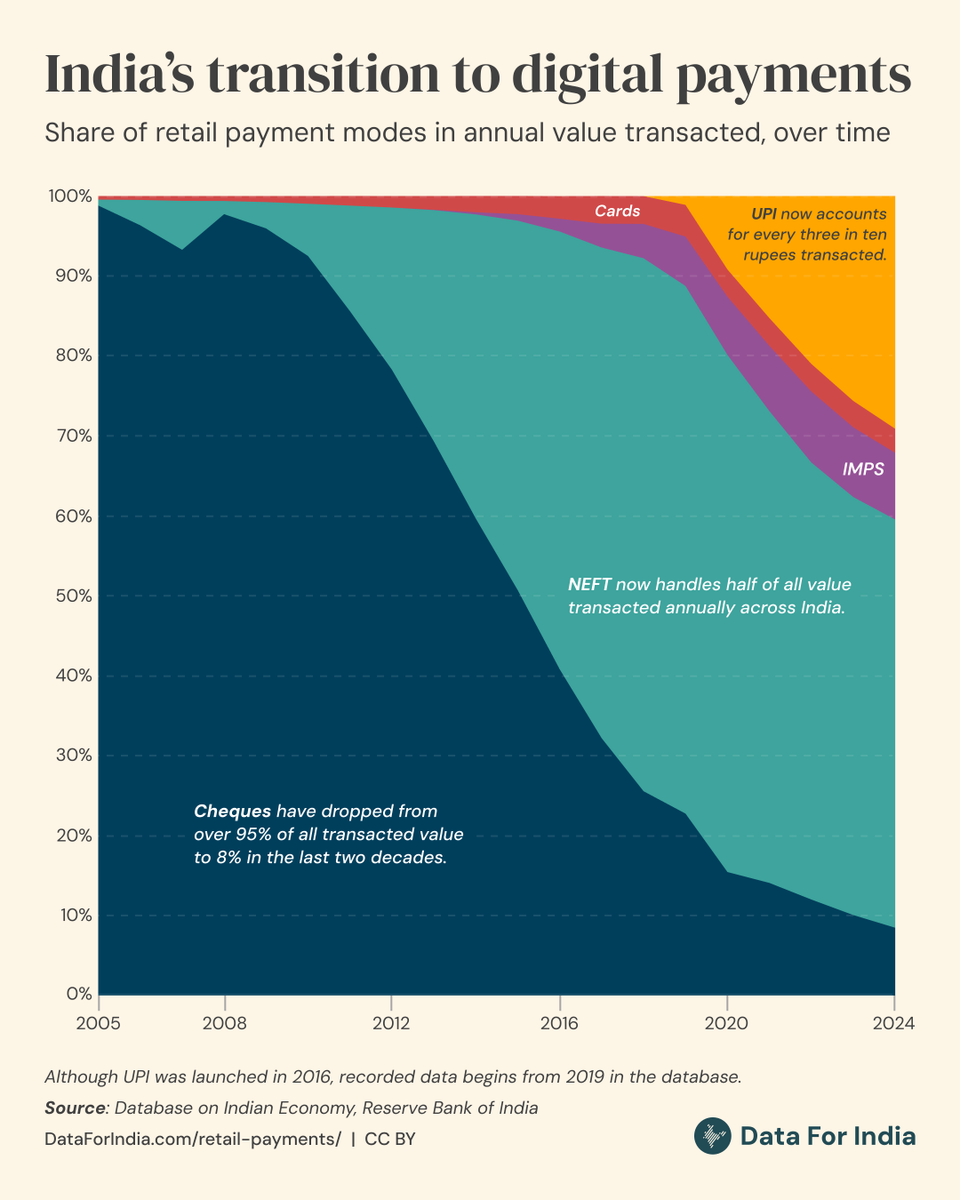
Data For India
@dataforin
Insights, charts and data to create shared knowledge and expand our understanding of India.
India's economy is the fifth largest in the world, and is projected to become the third largest by 2027. The size of a country's economy is measured in terms of the gross domestic product (GDP). The GDP is the sum of the monetary value of everything that is produced in the…

India has the world's largest emigrant population, with over 18.5 million people of Indian origin living overseas in 2024, accounting for 6% of all international migrants globally. According to the United Nations, an international migrant is someone who has moved across an…

With over 1.3 billion people, India is the most populous country in the world. However, its population growth has been gradually slowing down. There was certainly a time when India's population was growing very fast. In the three decades after Independence, India's population…

Propelled by rising mobile phone and internet access, India is witnessing an exponential growth in digital payments. Just two decades ago, more than 95% of the money spent every day on major retail payments was made using cheques. However, since the introduction of the National…

Despite substantial progress in enrolment in school and college, a majority of Indians above the age of 25 are still either illiterate or educated only up to the primary level. Just over one in ten, meanwhile, have completed a higher education programme. This data comes from the…

Over the last two decades, India has seen a big push towards financial inclusion. Having a bank account is an important first step in that journey, allowing account-holders to receive welfare benefits, save, borrow and invest. From fewer than half of Indian households having a…

India’s female labour force participation rate (LFPR) is low compared to global standards, but has risen over the last decade. The LFPR measures the share of adult Indians who are either working or seeking work. While most Indian men report being in the labour force, the…

Open defecation is a serious challenge to public health and to the dignity of individuals. It is associated with the spread of diseases like diarrhoea, cholera and typhoid, and exposes women and children to unsafe locations and the risk of harassment and assault. Additionally,…

One of the most important measures of a country's nutritional and public health status is whether its children are adequately nourished. The most closely tracked indicator on child nutrition outcomes is stunting. A child is considered stunted if their height is significantly…

One of the most important ways that countries interact with each other in the global economy is through trade - imports into the country and exports out of the country. India exports goods and services worth $780 billion, while its imports were worth $860 billion, as of 2022-23.…




Higher education is seen as being key to getting young Indians into skilled jobs, and to accelerating economic growth. In India, just under 40 million young people (age 18-23) were enrolled in higher education programmes as of 2022. This included both undergraduate (or…

India is a relatively young country. Half of India's population is under the age of 30, making it a far younger country than its European, North American and East Asian counterparts. The median American or Chinese person, for instance, is over a decade older than the median…

Literacy - the ability to read and write a sentence in any language with proper comprehension - is the most fundamental measure of educational outcomes. India has made remarkable progress in improving literacy rates, rising from fewer than two in ten literate in the early 1950s,…

The last two decades have seen a massive increase in the number of mobile phone connections in India. 85% of Indian adults, or about 850 million people, had access to a mobile phone as of 2023. The rise of mobile phones also powered the spread of internet availability in India.…
